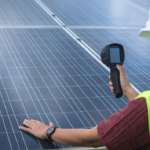Marketers: Reconsider your cost-saving ambitions for AI advertising content development. A US District Judge affirmed the US Copyright Offices’ long-standing position of “human authorship,” ruling that AI-created art cannot be copyrighted. Judge Beryl Howell writes that US copyright law does not “protect works generated by new forms of technology operating absent any guiding human hand.” While most marketers don’t bother to copyright advertising campaigns, the issues of ownership and human involvement can’t be ignored. The court’s decision throws cold water on the efficiency objective for advertising content generated solely by AI and questions who owns your brand. If efficiency isn’t the sole advantage, effectiveness may be the real benefit of the human + machine creative team using AI to assist in advertising development and production.
CMOs Face The “Do More With Less” Paradox
Efficiency versus effectiveness arguments are familiar territory. Media planning and buying disciplines have debated efficient audience reach versus effective channels and context for decades. But contradictory objectives are another matter. Among the top business priorities in the C-suite are revenue growth and cost reduction. When asked how they intend to grow revenue, the C-suite’s top response is “acquire new customers.” When asked how they intend to reduce costs, the top response is “optimize marketing spending.”
How companies intend to acquire new customers while simultaneously reducing the program budget designed to attract new customers is a paradox. Yet, it’s most marketing executives’ daily reality now that over 60% of US CMOs tell us their marketing budget will see a decrease in 2024 compared to 2023 levels. Like it or not, marketers will need campaigns to provide both impact and cost reductions.
Two Classes Of Creative Won’t Cut It
Given this environment, it’s not surprising that nearly half of marketing leaders look to generative AI and automation to increase cost efficiency of marketing delivery. And while AI-powered content production will provide speed and scale, it’s not practical to remove humans from the process given the ethical and legal shortcomings in current diffusion and large language models. Add to this complexity that marketers and brands cannot copyright taglines, headlines, or images created by AI in a need to make choices about which marketing execution provides impact versus efficiency.
One option is for marketers to apply AI efficiency to short-shelf-life, hard-working performance, and retail media campaigns (in contrast to high-profile brand campaigns and experiences in social, streaming ,and broadcast). Unfortunately, the clean divisions between brand and performance marketing are disappearing, and the vacuum left by declining broadcast audiences gets filled by retail media and commerce campaigns. The bottom line? A strategy to create two classes of creative, one low-cost and one high-impact, is unsustainable in today’s omnichannel environment.
Define Human Authorship
While the Thaler case reasserts the human authorship requirement for copyright, the court does not define human authorship beyond a person originating and authoring the work. The Judge goes on to state:
“The increased attenuation of human creativity from the actual generation of the final work will prompt challenging questions regarding how much human input is necessary to qualify the user of an AI system as an ‘author’ of a generated work, the scope of the protection obtained over the resultant image, how to assess the originality of AI-generated works where the systems may have been trained on unknown pre-existing works, how copyright might best be used to incentivize creative works involving AI, and more.”
In other words, US copyright law will need to evolve to further define what constitutes human authorship in the context of AI platforms and capabilities. Consequently, marketers and respective industry associations should assist in that definition and drafting standards. But until that’s done, the question of who, if any entity, owns your brand and its advertising will remain fluid in the brave new AI world.
Here are four best practices for B2C marketers to follow when using AI as part of their creative advertising development:
-
- Log all prompts to AI platforms, variations, and drafts as evidence of human involvement and authorship of the idea.
- Create a library of prompts and their effectiveness in order to recreate marketing and advertising campaigns generated with the assistance of AI.
- Avoid entering proprietary or sensitive data to public versions of diffusion or large language models, as the protection of that data is unclear, and the data used to train public versions is not fully understood.
- Use closed, proprietary AI systems trained with data your company and your advertising partners “own” or are authorized to use for marketing creation.
Forrester clients can refer to the Agency AI-Powered Workforce Forecast, 2030 (US), Generative AI Unleashes Marketing’s Creativity Renaissance, or Forrester’s generative AI resources.
Be on the lookout for a new report the details our framework for marketers to adopt AI.
Forrester clients wanting to discuss this topic can set up a guidance session or inquiry.








